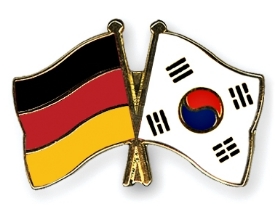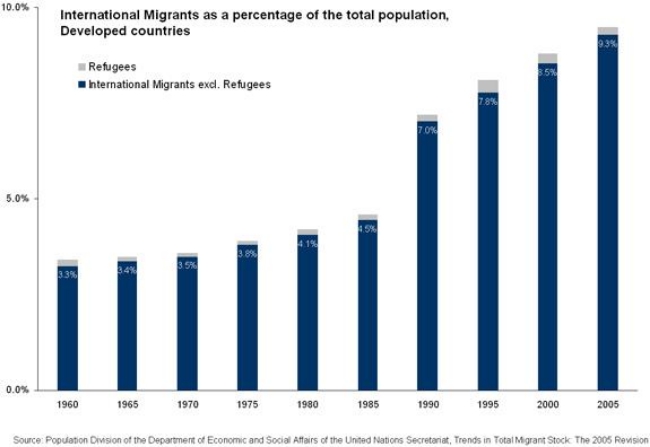
Crossing Cultures with Type
An Expatriate Experience
Doris Fullgrabe, April 10, 2013

Expat assignments are a costly and complex change process. In 2011, member companies of the Worldwide ERC Global Relocation Council spent about $9.3 billion in the USA alone on domestic and international relocations. That makes the relocation industry comparable to the American plastic surgery industry ($10 billion) and the Chinese gaming industry ($9.7 billion). An organization will likely spend four to five times the annual salary for every person it sends abroad. Support services, including pre-departure readiness assessments, cross-cultural training, language classes, home visits, and coaching, amount to less than 5% of total relocation cost.
But companies are beginning to recognize that these “soft” services have a hard impact on the bottom line. According to the Brookfield 2012 Global Relocation Trends Survey, “Respondents indicated that 6% of assignments fail. [Author’s note: Continuing from the numbers above, that’s a $558 million loss every year in the US alone.] Top causes for failure are: the employee leaves to work for another company; spouse/partner dissatisfaction; other family concerns; and the job does not meet expectations.” The top reason for early returns are family concerns: one in three expats (33%) does not complete the assignment due to, for example, family members not adjusting to the new culture. Companies are trying to improve ROI through “better candidate selection/assessment; career-path planning to utilize cross-border skills upon return; more effective communication of assignment objectives; better assignment preparation; and mandatory cross-cultural preparation” (Brookfield Global Relocation Services).
Coaching that uses personality type and culture frameworks together provides a more complete picture and better support for an expat’s adjustment. Adding type knowledge to the expatriate selection and support process can increase the expat’s understanding of how inborn personality type preferences may be influencing cross-cultural adaptation. In particular, a closer look at the introverted feeling (Fi) function provides clues to adapting values-based behaviors. Type and culture awareness combined open new doors to developing more effective leadership, communication, and stress- and change-management skills, which are all essential for the expat employee, as well as accompanying family members, to enjoy a successful international assignment.
Where do Type and Culture Meet?
As Myers and McCauley observe, “Jung believed he was describing mental processes common to the entire human species. To the extent that he was correct, type differences should be consistent across cultures” (1985, p. 223). Jung in fact stated that, “Type differentiation often begins very early, so early that in some cases one must speak of it as innate” (1971/1990, para. 896). Our innate type tendencies predispose us to interact with our environment in a certain way. The environment we grow up in, in turn, teaches us about our culture’s symbols, heroes, rituals, and social norms, thereby shaping our value-system. As newborns we are unable to take care of ourselves. Cultural frameworks are imprinted alongside our type predispositions from very early on. To understand type across cultures, then, “it is helpful to focus on the essence of the preferences and the dominant functions” (Kirby, Kendall & Barger, 2007, p. 24), and see them in their cultural contexts.
A Day in the Life of a German ENTJ in South Korea

The following is a summarized account of how Anna described some of her experiences abroad in our interview, followed by a look at how her cultural values and function-attitudes show up.
“Another day at the office,” Anna mumbles, as the Monday morning wake-up call interrupts her much-needed sleep. This weekend was particularly short, what with the customer dinner, drinks, and Karaoke on Friday night, clubbing on Saturday night, as well as spending most of Sunday taking a train to the country. What a waste of time that was. Ninety minutes away from the city and everything still looked the same, no precious field or forest in sight. Should she have stayed in to rest? Of course. The pressures of the job and the 60-plus hour work week are simply too stressful. She has no other outlets available to her—with friends and family half a world away, time zone differences make same-time conversation virtually impossible. So, she goes out to vent on the weekends.
She almost trips over the room service tray on her way to the shower. This project is a dream come true, but she misses her apartment. Not having your own four walls to retreat into after a long day only reinforces feelings of not being at home.
Traffic is horrendous as usual. How can so many people share so little road? This taxi gives her almost two square feet of private space, and Anna relishes every minute of it. Now, if only there was a green park or open space to rest her eyes on instead of grey buildings lulled in grey smog.
Arriving at her office tower, she greets the security guard and patiently waits with the other employees for an available elevator she can squeeze herself into. It’s 7:50 a.m.; she’s right on time to watch the exercises this morning. She’s not going to participate, of course—Who are we kidding? The voice comes through the crackling speaker system at 8:00 a.m., a little loud and not very clear. All Korean employees stand at their desks, bending this way and that, following the instructions to stretch and prepare their muscles for the 12-hour-day ahead. Anna watches for a bit, then quickly hits her stride, checking and replying to emails in her usual effective and efficient manner.
Last week, the Korean deputy business manager directly asked her if he could reject the appointed Project Manager. Since she is the Project Manager and the Korean deputy surely would not have insulted her to her face like that, she could only assume he was referring to the IT Project Manager, a local male Korean employee. Anna’s response came down to a quick “No.”
Anna begins the Monday-morning meeting: “Good morning, everyone. We are here to prepare a presentation to our customer about the project. Let’s discuss some questions and see where we’re at.” Most team members are unfamiliar with the specific topic, and it becomes pretty clear pretty quickly that the customer rep is getting uncomfortable having to field so many questions. Eventually, the customer rep says to Anna, “Why don’t you contact your experts in Hamburg?” To which Anna replies, “Alright then, that’s it. If you can’t tell us now, let’s stop the meeting here and continue later.”
Feeling her stress levels rising, wondering about the exchange with the customer rep, Anna continues her morning. All lights in the office dim at midday, signaling it’s time for the one-hour lunch break. She goes to eat, and as most employees head back to take a nap at their desks on little pillows across the keyboard, Anna stops by the kiosk and purchases a candy bar. She hands it to the customer rep and apologizes for having snapped at her earlier. The customer rep accepts the candy bar and looks a bit embarrassed as she promises to bring everyone up to speed.
Anna walks into the afternoon meeting, tired, but happy to have the customer rep back on her side. She is giving a sales presentation, explaining what her company’s products can do for the audience’s business. The eagerness to learn is palpable, everyone is taking notes and listening intently while she presents. When Anna finishes, there is a moment of silence. Eventually, the highest-ranking customer official asks the first question. This signals permission for others to ask questions as well, effectively starting off the Q & A session. Some employees have questions but don’t speak English, so they enlist others to translate. Anna is trying her best to read body language and follow up to make sure there are no misunderstandings.
After a few more hours of diligent and uninterrupted work, she calls it a day at around 7:00 p.m.. Back at the hotel, she grabs a bit of dinner at the bar, then slumps into her reading chair ready to go over the customer rep’s report. Working in a foreign language all day, while hearing chatter in another foreign language all day, is truly tiresome. Although she feels comfortable in her role at work during the day, a look in the mirror at night reminds her: I don’t belong here.
Cultural Values
Cultural values develop over time as a response to natural conditions, with the motivation to secure the survival of the species. Geography and climate influence values: e.g., one’s notion of time and sense of security. Culture is an iterative process, in which individuals, foundational ideas, everyday practices, and institutions influence one another to perpetuate the culture’s ideals.
To understand behaviors across cultures, it is helpful to think of the iceberg metaphor. The visible 10% on top are observable items and behaviors, like language, dress, architecture, greetings, or food customs. It’s the ‘how’ of culture. What we see may make no sense to us whatsoever, or we may make assumptions that turn out to be wrong. We can ask questions, which is like dipping our toe in at the water’s surface. To improve our understanding of where these behaviors come from, we need to dive deeper. Under water we get to what is important in the culture; the values that influence the observable behaviors. They are the ‘why’ of culture.
What lessons can we learn by looking at Anna’s experiences through the function-attitudes and the cultural values-based behavior lenses?
Decision-Making

Anna’s decision-making process for taking the assignment was fast and objective: the project offered good money, great opportunities, and invaluable experience for future endeavors. Personal relationships to friends and family members at home did not outweigh the rational arguments. In our interview, Anna described German culture as very linear, “one thing after another.” She experienced society as very rules-based, with a clear separation of business and private lives. Her dominant extraverted thinking (Te) preferences was probably nurtured by this linear, rules-based, and neutral cultural orientation.
In Korea, decision-making often depends on maintaining harmony, requiring behaviors more associated with the Feeling preference. Korean values for decision-making include rapport, trust, relationship, and connections. You can observe Koreans behaving according to these values as they engage in lengthy discussions, where the involved parties get to know one another better before getting down to business. Individuals may take a long time, for example, to consider a job offer, to weigh the impact of their decision on their larger family system. Considering all involved parties and their relationships to one another is as—if not more—important as factual correctness.
To be an effective decision-maker doing business in Korea, one needs to use the facts and figures as a basis, as someone with extraverted thinking (Te) preferences does, but also one must consider the people involved in and impacted by the decisions. When you first arrive, ideally you will be introduced to your team by a senior manager. This creates an impression of trust. You would spend a considerable amount of time socializing and getting to know your colleagues for the same reason. Consider using your extraverted thinking skills of organizing and planning to factor in sufficient time in meetings for social needs, as well as for after-work activities. Consider reviewing the company’s org charts to get a better sense of the hierarchies across departments. When choosing a supplier, take not only prices into account, but familial relations to your CEO or VP, and which other companies or competitors they may be serving.
Teamwork
German underlying values for teamwork include expertise, consensus, boundaries, and rules. This is expressed through behaviors where team members execute tasks and make decisions to the full extent of their role, collaborating and taking responsibility for their actions. Working in Germany, Anna was used to an objective, task-focused approach to getting the job done. In German teams, roles tend to be clearly defined. Everybody is an expert in his field, and has the authority to act within the lines of his responsibility. Respect and status correlate to someone’s ability and achievement. This often leads to spirited discussions and lengthy analysis of the background and details involved in a decision or project. US-Americans listening to a German’s explanation have been known to say, “Look, I asked you what time it is, not how the watch is made.”
In Korean teams, the values are hierarchy, relationships, tradition, and respect by ascription, favoring behaviors that probably look and sound like introverted sensing (Si) and extraverted feeling (Fe) preferences. Responsibilities may also be clearly defined on paper, but the unspoken relationships are opaque to cultural outsiders. Respect and status are ascribed according to seniority in age and position. Elders are respected to the point that when senior executives make mistakes, junior associates accept the blame. Employees work in consensus with their teammates, and if something goes wrong, the team will likely take responsibility together.
In the Korean workplace, the leader like Anna is always expected to have all the answers, and an employee would be considered presumptuous if she tried to educate her superiors. It may have been this cultural conditioning, not a lack of expertise, when the customer rep asked her, “Why don’t you contact your experts in Hamburg?” She was probably embarrassed when Anna stopped the meeting and subsequently apologized with the candy bar. In fact, Anna was told she should always address her Korean peers (even if the subordinates speak better English), and only befriend her equals, not the team members who report to her.
Trying to be helpful to others in ways that are not culturally common or accepted can easily backfire. Since we trust our auxiliary function to protect us and support others, we need to understand the cultural context to avoid feeling insecure, and overcome actual or imaginary faux pas with others. In Korea, the new cultural context confused Anna’s auxiliary introverted intuiting (Ni) antennas, and brought out her Trickster seventh function, introverted sensing: She expected her behavior to yield the same results as it would have in Germany, but as in the case of the customer rep (“If you can’t tell us now, let’s stop the meeting here and continue later”), it did not. In the situation of asking for information and not receiving it, what Anna meant was: “I’ll give you some time to read up on the things I expect you to know.” This put the customer rep in a tough spot, because in her culture, she is not supposed to show it even if she does know more than the boss.
It can be challenging for someone from an egalitarian culture to get comfortable assuming a higher-ranked position. It can also be challenging to transition from an achievement model (what you do) to an ascription model (who you are). Remember to use everybody’s titles, including your own, to show respect for the status in the company. It is also helpful to view higher positions from a servant leadership perspective: with great power comes great responsibility. The wellbeing of your team lies in your hands.
Communication
The German values for communication are directness, clarity, time- and task-focus. Trompenaars and Hampden-Turner identify a “Neutral vs. Affective” dimension, which describes how much overt emotion is acceptable in a culture (1997). Germany scores higher on the Neutral end, which means Germans tend not to gesticulate or use facial movement a lot. The German communication style is also direct and low context, which means the words carry the meaning. There’s no need to read between the lines; Germans tend to spell out exactly what they want to communicate, often in precise language—including swear words, if the situation warrants. It is common for German employees to challenge and disagree with their bosses directly if these are not making sense.
Anna’s auxiliary introverted intuition enables her to integrate the details and oversee where they fit into the project. Processing large amounts of information and providing detailed analyses of facts and figures may remind us of a preference for Sensing, but with an NT temperament this is motivated by the drive for excellence. She says that she enjoys being the generalist and knowing a little detail in a lot of areas. While her direct communication style seems natural to a German or someone with STJ/NTJ preferences, in Korea it would offend.

Many Westerners prefer direct language. In Korea, a clear and spontaneous “No” like the one Anna gave the deputy business manager is considered rude. Consider using impersonal pronouns and counting to ten before responding. This may support conscious reflection of a suitable response, and signal your respect and consideration of your counterpart’s argument. Silence is often used as a negotiating tool, so it’s a good idea to resist trying to fill empty space with words.
Anna and her Korean colleagues were communicating in English, a language foreign to both parties. Learning languages in school, it took Anna some time and practice to feel comfortable and approach language as something spoken, not just something to be read or written. While persons of any type preferences would want to be competent, this seems to be a driving force in the NT temperament. Being able to communicate with locals is essential for cultural adaptation, and accepting that you may make mistakes at first is helpful in reducing the psychological stress an NT might experience from not being competent (enough) yet. Anna’s tertiary function, extraverted sensing (Se), was probably supporting her skills in reading body-language, but relying on the tertiary for any length of time is exhausting. Many expats report feeling more tired abroad and having less energy after work than they would at home. That is probably in part due to operating in a language that is not the mother-tongue.
Alleviating Stress
Since international assignments are such a tremendous change process, our third function gives excellent clues for how to alleviate stress and be playful. In a city like Seoul with concrete pavements for miles on end, Anna’s eyes were yearning for some wide and open space, lush green fields, feeling free and unencumbered. Her extraverted sensing was not stimulated by the gray cityscape, and at the time, she hadn’t yet discovered sports and jogging as an outlet for her energy. After a stressful week, going dancing was the best way to let off some steam (“Karaoke on Friday night, clubbing on Saturday night”) and reconnect with her body. When a 90-minute train ride that was supposed to take her out of the city still didn’t get her to the countryside she was missing, she got frustrated.
When Anna moved to Korea, she expected to go through a culture shock, because everything was so different. She didn’t look like a Korean, she didn’t talk like a Korean, she didn’t eat like a Korean, she couldn’t even buy shoes or clothes like a Korean—they didn’t have her size. When she took another project in the United States some time later, she looked like others, was able to converse with the natives, understood the menu, and went shopping to her heart’s content. She did not expect the culture shock this time, and when it hit, it was a complete surprise. It was milder but occurred at a deeper level.
Many expats report experiencing culture shock in two waves: the first one hits when you truly begin noticing the external differences, like language, architecture, and different behaviors. The second wave goes deeper: it makes you question your own values, since nobody else around you seems to be sharing them. As the saying goes, “The first stranger you meet abroad is yourself.” For an ENTJ, the valuing process of introverted feeling (Fi) is in the inferior position. We can assume that Anna was somewhat conscious of her own values, but that they may have interfered with her adjustment during the more stressful periods. Take the communication values as an example: in Germany, direct communication saves time, whereas in Korea, indirect communication saves face. Anna grew up valuing time, speaking clearly, separating business from personal. Run the value of “saving face” through her introverted feeling process, and it may not even register in her framework. When the introverted feeling function is challenged, we see expats behaving in ways that they are used to, often stubbornly so. The urge to insist that everyone ‘just do it my way’ is tempting. Anna probably became more open to adapting her behaviors once she noticed that doing things ‘the German way’ was ineffective.
The impact of Anna’s fourth function may be compounded as she finds herself in ambiguous situations over a prolonged period of time. Expats are cut off from all their usual cultural cues anyway, and living in a rented space with no personal items added an extra challenge for Anna. At first, the hotel and its maid service seemed delightful—Who doesn’t like having someone else clean and do laundry?—but over time she needed her nest (“Not having your own four walls to retreat into after a long day only reinforces feelings of not being at home”).
Expats who are open to adding new value descriptors to their framework generally have a better experience abroad (e.g., Indirect communication is time-consuming but/and Fewer Koreans would get offended and stonewall me). The key to remember here is, we’re talking about adapting, not adopting. Expats do not have to change who they are or what they believe in. Consider adding new local culture-based definitions of values, and corresponding behaviors, to your repertoire—but only if you want to be effective.
The Value of Type and Culture Knowledge
International assignments are excellent catalysts for personal and professional growth. Among many other things, they challenge our introverted feeling function. Introverted feeling is the process we use to consult our values and make judgments about what is right and important. Its position in our type code indicates how conscious we are of our values, and the environment and culture we grow up in fills our framework with value items. We increase our ability to adapt to different cultures when we practice adding local descriptors and behaviors.
Anna’s ENTJ preferences align pretty closely with the German values of avoiding uncertainty by planning, by scheduling time effectively and efficiently, by organizing, by striving for excellence, and by being an experienced expert in her field. Once she arrived in Korea, she had to learn to adapt her style to different cultural ideals more aligned with SFJ preferences, namely valuing harmony, tradition, and the concept of “saving face” by communicating indirectly, by cultivating a regard for hierarchy in showing respect for a person older and/or higher in rank, and by serving the community and placing higher focus on the needs of the group than the individual.
Every international relocation is unique to the country and people you encounter. It helps to know your personality type preferences and the values that drive behavior in the culture you are moving to. Examining your leadership, communication, stress-management, and change-management styles using both type and culture lenses is an effective way to increase your chances for a successful and enjoyable time abroad.

References
Berens L. V. (2008). Understanding yourself and others: Introduction to Interaction Styles 2.0. West Hollywood, CA: Radiance House.
Berens, L. V. and Nardi, D. (2004.) Understanding yourself and others: An introduction to the personality type code. West Hollywood, CA: Radiance House.
Jung, C. G. (1971/1990). Psychological types (CW 6) (R. F. C. Hull, Trans.). Bollingen series. Princeton, NJ: Princeton University Press.
Morrison, T. & Conaway, W. A. (1995). Kiss, bow, shake hands. Avon, MA: Adams Media.
Myers, I. B. & McCauley, M. (1985). MBTI manual. Mountainview, CA: CPP, Inc.
Schaubhut, N. A. & Thompson, R. C. (2009). MBTI type tables international. Mountainview, CA: CPP, Inc.
Trompenaars, A. & Hampden-Turner, C. (1997). Riding the waves of culture. New York, NY: McGraw-Hill.
Header Image
Canal in the historic centre of Gothenburg, royalty-free image, courtesy of dreamstime.



















This is very helpful, I love to read about personality.
Thanks for sharing
Thank you Dr. Karani for your thoughtful comment! I agree, every country is home to a multitude of sub-cultures with behaviors and values specific to certain groups, and it takes time to change those practices and beliefs. However, I think we’ve seen a more rapid change in recent years, thanks to globalization and technological advances. I wonder if we can truly speak of a “melting pot”, where multiple cultures come together to form a new one. I know that was the original idea of the USA, but in my experience it’s more like a “salad bowl” – many ingredients, but each retaining some unique characteristics. Take for example the ‘China Town’s or ‘Little Italy’s in various bigger cities.
Countries are cross-cultural by nature. America and Great Britain are both examples, as they each have a unique culture. However, there are segments of the population that perhaps practice cultural norms and traditions that are different from the country’s culture.Cross-cultural traditions do not eradicate the main culture of a country. In fact, they diversify a country; thus producing a melting pot, such as America. Over time, cultural conflicts or change may antiquate a practice that was once cross-cultural; however, that usually takes many generations to occur.
Great, thanks Jennifer! 🙂
Very thought-provoking example — thanks!